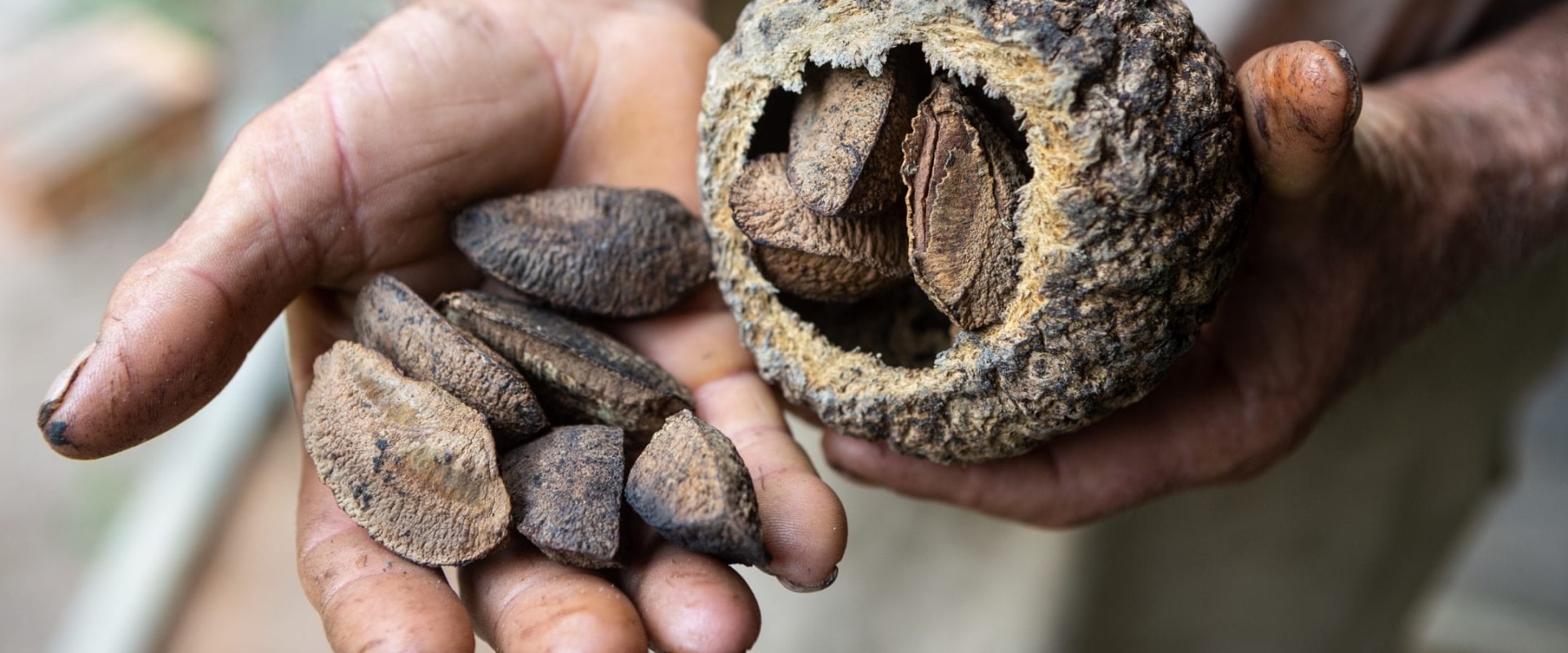Brazil nut (Bertholletia excelsa), also called Pará nut, edible seed of a large South American tree (Lecythidaceae family) found in the Amazon forests of Brazil, Peru, Colombia and Ecuador. Technically, a nut is a single-seeded fruit with a hard, dry outer wall that doesn't break when ripe. Therefore, because there are up to 25 of them in each coconut pod, Brazil nuts are classified as seeds. Since Brazil nut is a botanical seed, unlike botanical nuts, the density of the fruit causes it to sink in fresh water.
It takes about 14 months for the fruit to ripen once pollinated. The resulting fruit is quite large (4-6 inches (10-15 cm). Within the hard, woody shell, 8 to 24 clearly triangular seeds reside packed together like orange wedges. These seeds are what we call Brazil nuts.
Nuts, botanically speaking, are actually an indehiscent fruit with a hard shell like an acorn. Despite its name, Brazil nut is technically a seed rather than a nut. By definition, nuts are hard-shelled fruits that contain a single large seed. Walnuts and pistachios are good examples.
In Brazil, cutting down a Brazil nut tree (usually with the intention of harvesting wood and Brazil nuts) is illegal, unless done with the prior authorization of the Brazilian Institute of Environment and Renewable Natural Resources. There are some plantations, but Brazil nuts are mostly harvested in the wild between December and March, when fruits begin to fall from their trees. Given their impressive nutritional profile, it's no surprise that Brazil nuts have become so popular. Although beneficial in small amounts, Brazil nuts could cause selenium toxicity if a person regularly ingests them in large quantities.
Brazil walnut trees (Bertholletia excelsa) are the only species of the monotypic genus Bertholletia, named after the French chemist Claude Louis Berthollet. Brazil nut is a non-timber forest product that provides income to Amazonians who harvest it for food. The chestnut tree is vital for the conservation of the region's rainforests because it only grows in an untapped ecosystem, where there is a significant concentration of biodiversity. You may not have thought about it, but Brazil nuts are really a big problem, adding tens of millions to South American economies every year.
The fruit of the Brazil nut is similar to coconuts, typically round shells measuring between 10 and 15 cm in diameter and containing between 18 and 20 seeds that have their own hard, woody shell. In its native habitat, Brazil's enormous chestnut tree competes with another giant of the rainforest, the strangler fig (Ficus species). Brazil nut is known to be pollinated only by large bees with enough strength to lift the hood and enter the flower. The concentration of selenium in Brazil nuts varies according to the amount present in the soil, so each nut may contain a different amount.
Four-lobed spiny covers protect one or two triangular nuts that are an important source of food for mice, field mice, squirrels and birds. Both Bolivians and rural Brazilians rely on the collection and sale of Brazil nuts as their main source of income. If you take them from the bag of mixed shelled nuts mentioned above, you will not be able to spread them. Sticky strangler fig seeds are deposited on chestnut branches in the droppings of birds, bats and monkeys.

Leave Message